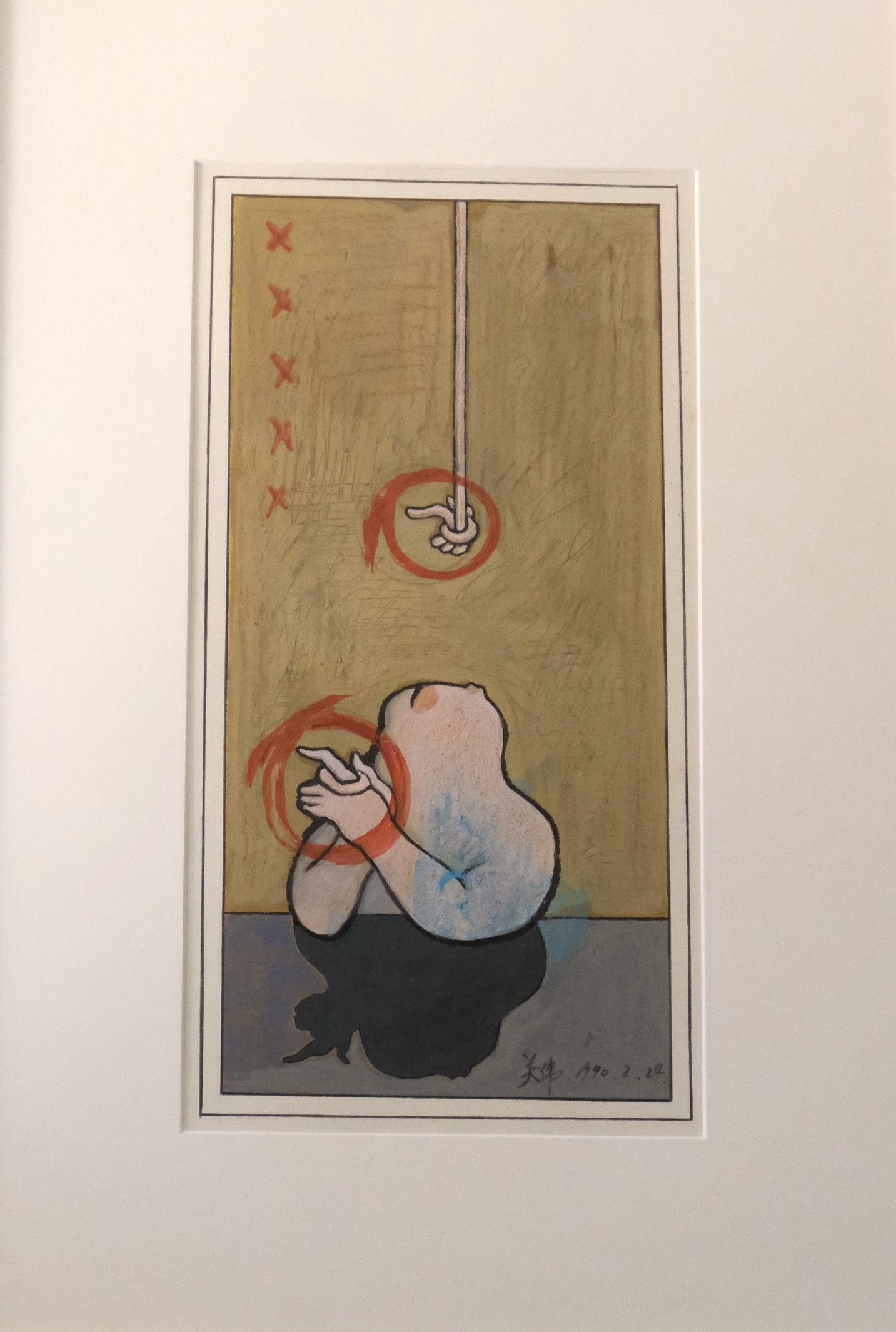Untitled
Untitled (1990) by Guan Wei
Acrylic on canvas, 44cm x 22 cm
Collector: Linda Jaivin
Ah Xian introduced me to Guan Wei in the early eighties. He was teaching painting at a school at the time. I love this painting of his for its whimsy and layers of possible meanings. It displays the playfulness that infuses all his artwork, including those that touch on serious subjects like refugees or the 1989 Beijing protests and massacre. In this painting, one of Guan Wei’s hallmark human-ish forms contemplates a knot hanging from above. It uses its fingers to mimic the form. There are calligraphic red circles around both the fingers and the knot, like those traditionally used to mark particularly well-written characters, and the figure casts a shadow in which the fingers look a bit like a cartoon duck head.
We learn language through imitation. Many of us will know what it is to attempt to fit in to a new environment – whether simply a new workplace or another city or country – by observing and trying out its ways of speaking and gesturing. Immigrants understand this challenge well. The painting suggests all this to me as well as illustrating the process of imaginative transformation that is central to the making of art itself. It is an expression of what in Chinese is called tongxin 童心, a ‘childlike heart’. Tongxin is one of Guan Wei’s lovely traits as an artist and person, and links him to a tradition that includes the 20th century artist and essayist Feng Zikai 豐子愷 among others.
The spirit of play also connects him to the tradition of his Manchu ancestors. The Manchus, a semi-nomadic people from what is now the Chinese Northeast, the rulers of China’s last imperial dynasty, the Qing, were famous for their love of xiao wanyi’er 小玩意兒, ‘little entertainments’. These included the keeping of crickets or songbirds in elaborately crafted cages and attaching tiny whistles of different pitches to the legs of homing pigeons to create a kind of celestial music while flying. Xiao wanyi’er are all about finding joy in small self-amusements – such as trying to work your fingers into the shape of a knot just for fun.
Linda Jaivin
(Linda Jaivin is an internationally published Australian author, translator, essayist and specialist writer on China, whose books include the critically acclaimed "The Shortest History of China.")
CLICK HERE to listen to Linda's commentary on Guan Wei and his painting.

